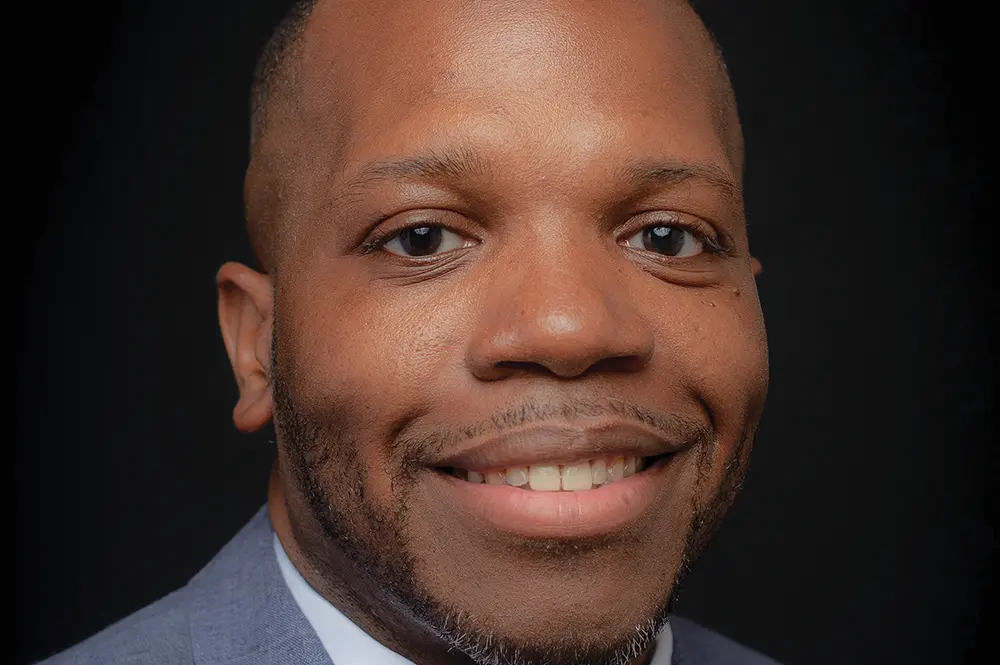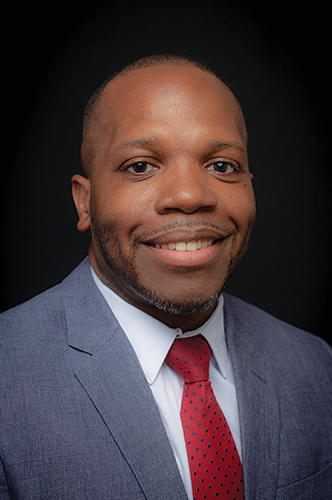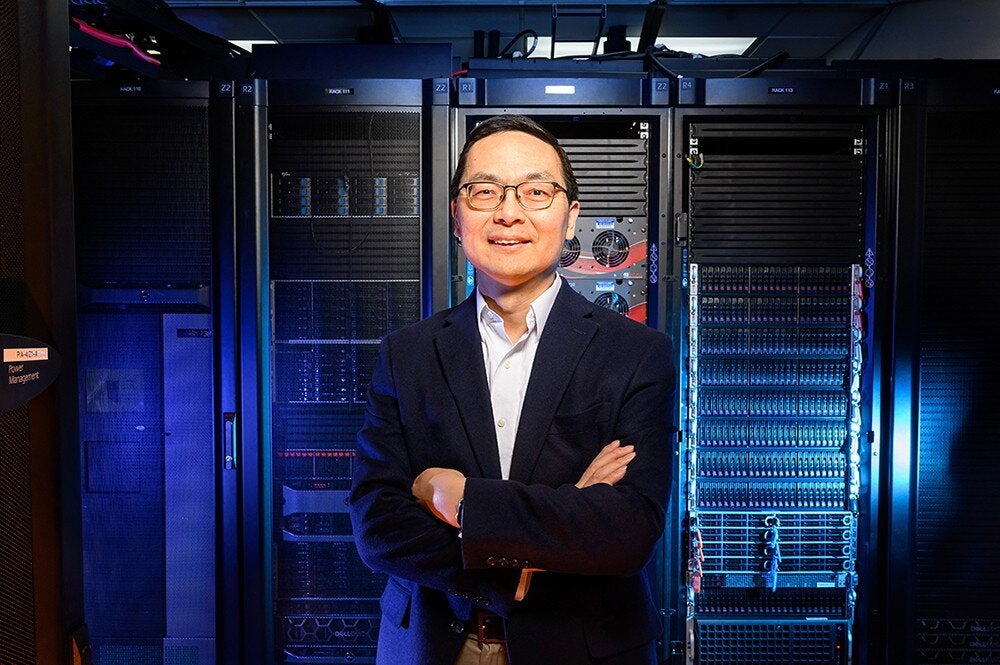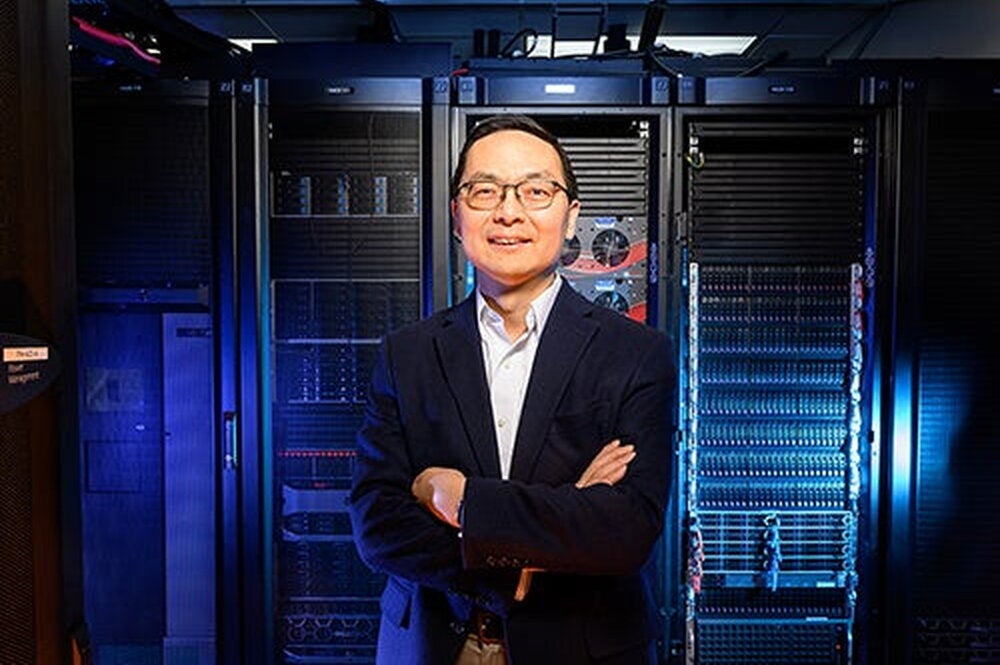

Jerrod Henderson (PhD ’10, chemical engineering) was a boy in Kinston, North Carolina, when he took a field trip that changed his life.
Henderson went to the Black Engineer of the Year Awards and Conference in Baltimore as a sixth grader, and at first “I was walking around, grabbing different goodies on the tables,” he recalled. But when he came to the tables run by various engineering companies, he found more than just goodies. He found adult engineers who took the students seriously.
“They talked to us like they were going to hire us, and that had a striking impact on me,” Henderson said. “While I didn’t know what chemical engineering was at the time, I left the conference saying I wanted to be one.”
Today, Henderson is a chemical engineer. He is also co-founder of the St. Elmo Brady STEM Academy—a successful program in two states that mentors underrepresented males in science, technology, engineering, and math (STEM) subjects.
He has also received the 2019 LAS Outstanding Young Alumni Award.
Henderson witnessed the power of a mentor in his own life, because he was mentored from a young age by Nathaniel Vause, an African-American engineer for AT&T. Vause founded the mentoring program that brought Henderson to that pivotal engineering conference in Baltimore.
Henderson said Vause’s influence couldn’t have been better timed because when kids reach fourth to sixth grade, many are deciding they do not like science or math, and they turn away from these fields for the rest of their life. Henderson, in contrast, always liked math and was good at it, so the North Carolina mentoring program, M.E.N.T.O.R., solidified his interest at just the right time.
Henderson went on to complete a five-year, dual-degree, engineering program at Morehouse College in Atlanta and North Carolina A&T State University before turning his eyes toward graduate school at the University of Illinois.
“I was always taught to give back to your community,” Henderson said, so while he worked on his PhD at Illinois, he began to volunteer at the Don Moyer Boys and Girls Club. He wound up running the club’s Benjamin Banneker summer camp, which focused on STEM subjects for fourth through seventh graders.
After graduating with his PhD in 2010, he began work first as an outreach education coordinator for mechanical engineering and then as a lecturer in chemical engineering at Illinois. He stopped doing the summer camp, but the Boys and Girls Club invited him back to volunteer for a male mentoring program, which incorporated STEM lessons, but only in part.
By this time, Henderson had connected with Ricky Greer, who was coordinating an after-school program in the Champaign Unit 4 school district. He and Greer decided to branch off and start their own mentoring program, which focused solely on STEM subjects for underrepresented males.
“We had observed that there were lots of STEM programs popping up for girls, but we saw the need to do something for African-American, Hispanic, and other underrepresented boys,” he said.
The result, in spring of 2013, was the St. Elmo Brady STEM Academy.
“I remember talking to Rick, and I asked what we’re going to name this program,” he said. “We were bouncing around names, and then I remembered seeing a poster in the chemistry building of a pioneering African-American scientist.”
Henderson tracked down the scientist’s name: St. Elmo Brady, the first African-American to earn a PhD in the United States. Brady received his PhD from the University of Illinois in 1916.
“St. Elmo Brady had a threefold connection to us,” Henderson said. “He went to Illinois, and I went to Illinois. He taught at Tuskegee University, and Ricky graduated from Tuskegee. But here’s the kicker. St. Elmo Brady was mentored by Booker T. Washington, and the first school where we were going to run this program was the Booker T. Washington School in Champaign.”
The goal of the St. Elmo Brady STEM Academy is to attract 20 students every semester. Students meet twice during the week and once on Saturday, running for eight weeks each semester.
At the beginning of the semester, Henderson said they ask fourth- and fifth-grade boys to name the top three things they want to be when they grow up, and they inevitably say things like basketball player, football player, and soccer player. But by the end of the semester, they may say basketball player, mechanical engineer, and football player.
What’s more, they usually don’t say something generic, such as “scientist.” They’re more specific: “engineer.”
According to Henderson, male mentors play a vital role in the program. Boys’ fathers are invited to the Saturday sessions, and if a student doesn’t have a father in the house, he is encouraged to bring another older male relative. The academy also provides its own male mentors for them.
“I remember one father telling me he was coming to hang out with his son, but he wound up mentoring the other boys as well,” Henderson said. This father and son were there for the Illinois dedication of a landmark to St. Elmo Brady in February of 2019.
The St. Elmo Brady STEM Academy program was a huge success, and it soon expanded to a second Champaign school—Garden Hills Elementary. Then, in 2016 Henderson moved to the University of Houston, where he is now an instructional associate professor. The program has since ended in Champaign, but he brought the STEM Academy idea to Houston, where it currently operates at two schools. Ricky Greer eventually moved to Houston as well, so the pair continue to lift up young minds.
Henderson said much of his research in Houston is about the development of engineering identity, as well as persistence in engineering.
“Part of the engineering identity is a sense of belonging, where a person feels they belong to an engineering community,” he said. “We project to these young fourth and fifth graders that they are already part of the scientific and engineering community.”
Another important part of the engineering identity is simple exposure to the sciences. “I saw what the power of exposure did for my life,” Henderson said. “I was that young boy at one time when my mentor brought me to the Baltimore conference so many years ago.”
He and his mentor, Vause, have remained in touch over the years. In fact, his mentor came to Illinois when Henderson received his PhD in chemical engineering in 2010. Vause even presented him with the copy of a newspaper story, in which sixth-grade Henderson was asked what he wants to be when he grows up.
Henderson told the reporter: “A chemical engineer.”


